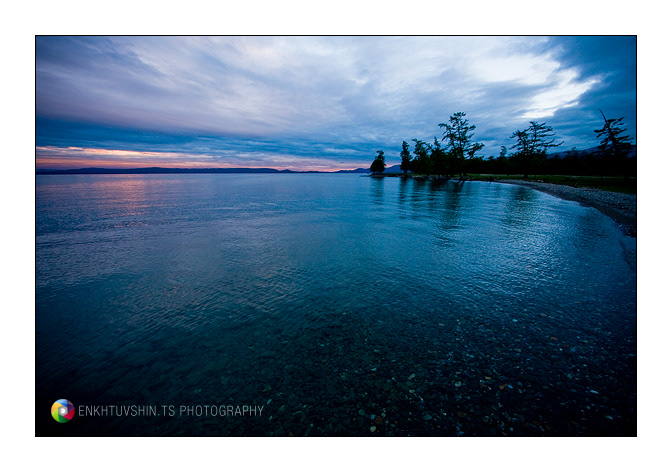Khuvsgul Lake
Lake Khövsgöl (Mongolian: Хөвсгөл нуур, Khövsgöl nuur, classic script: Köbsügül naγur), also referred to as Khövsgöl dalai (Хөвсгөл далай, Khövsgöl ocean) or Dalai Eej (Далай ээж, ocean mother) is the largest lake in Mongolia by volume, and the second largest by area.
Khövsgöl nuur is located in the northwest of Mongolia near the border to Russia, at the foot of the eastern Sayan Mountains. It is 1,645 m above sea level, 136 km long and 262 m deep. It is the second-most voluminous freshwater lake in Asia, and holds almost 70% of Mongolia's fresh water and 0.4% of all the fresh water in the world.[1] The town of Hatgal is at the southern end of the lake.
Its watershed is relatively small, and it only has small tributaries. It gets drained at the south end by the Egiin Gol, which connects to the Selenge and ultimately into Lake Baikal. In between, the water travels a distance of more than 1,000 km, and a height difference of 1,169 m, although the line-of-sight distance is only about 200 km. Its location in northern Mongolia helps form the southern border of the great Siberian taiga forest, of which the dominant tree is the Siberian Larch (Larix sibirica),
The lake is surrounded by several mountain ranges. The highest mountain is the Bürenkhaan / Mönkh Saridag (3,492 m), which has its peak north of the lake exactly on the Russian-Mongolian border. The surface of the lake freezes over completely in winter. The ice cover gets strong enough to carry heavy trucks, so that transport routes were installed on its surface as shortcuts to the normal roads. However, this practice is now forbidden, to prevent pollution of the lake from both oil leaks and trucks breaking through the ice. It is estimated that 30-40 cars have sunk into the lake over the years.
Its watershed is relatively small, and it only has small tributaries. It gets drained at the south end by the Egiin Gol, which connects to the Selenge and ultimately into Lake Baikal. In between, the water travels a distance of more than 1,000 km, and a height difference of 1,169 m, although the line-of-sight distance is only about 200 km. Its location in northern Mongolia helps form the southern border of the great Siberian taiga forest, of which the dominant tree is the Siberian Larch (Larix sibirica),
The lake is surrounded by several mountain ranges. The highest mountain is the Bürenkhaan / Mönkh Saridag (3,492 m), which has its peak north of the lake exactly on the Russian-Mongolian border. The surface of the lake freezes over completely in winter. The ice cover gets strong enough to carry heavy trucks, so that transport routes were installed on its surface as shortcuts to the normal roads. However, this practice is now forbidden, to prevent pollution of the lake from both oil leaks and trucks breaking through the ice. It is estimated that 30-40 cars have sunk into the lake over the years.




Khyasaa










